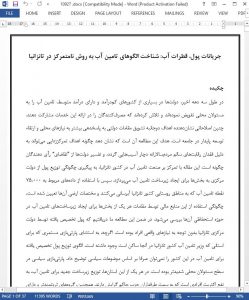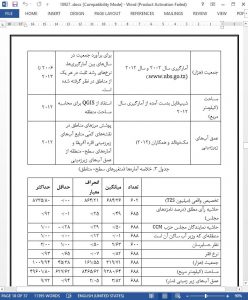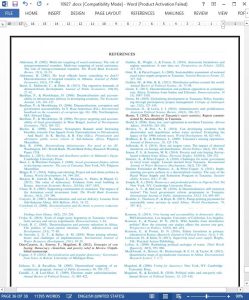Summary
Over the past three decades, an increasing number of low- and middle-income countries have decentralized water provision to the local government level, and have sought to more thoroughly involve users in service delivery. Such reforms reflect the twin goals of encouraging greater responsiveness to local needs and promoting sustainability. This study illustrates how the aims of decentralization can be undermined in the absence of robust democratic competition, and how governments interpret “demand” by voters in such settings. Focusing on the Tanzanian water sector, the paper first traces the distribution of money for water from the central government to the district level. Next, I consider how district governments use these funds to distribute water infrastructure within their jurisdictions, using geo-referenced data on all 75,000 water points serving rural Tanzanians. I find that the central government’s allocation of money to districts is fairly unresponsive to local needs. However, the pattern of distribution cannot primarily be explained by politics, with the exception of consistent favoritism of the Minister for Water’s home district. Political favoritism is more pronounced at the local level. Within districts, the distribution of new water infrastructure is skewed to favor localities with higher demonstrated levels of support for the ruling party. In addition, wealthier and better-connected communities—those with the resources to more effectively express their demands—are significantly more likely to benefit from new construction. This suggests that “demand-responsive” approaches to water provision can entrench regressive patterns of distribution.
1. INTRODUCTION
Since the 1980s, at least 41 countries have decentralized water and sanitation services to subnational governments (Herrera & Post, 2014). Such reforms have typically included provisions requiring water users to demand, own, and maintain their water services and participate in their design (Lockwood & Smits, 2011). Decentralized water provision aims to engender greater responsiveness to local needs. In general, bringing government closer to the governed should facilitate the identification and targeting of needy populations (Crook, 2003; Galasso & Ravallion, 2005), and make it easier for citizens to sanction or reward poor or good behavior on the part of local officials (Faguet, 2012). Moreover, having water users make informed choices about their preferred service level is expected to promote sustainability, by encouraging users to contribute to the upkeep of water infrastructure (Koehler, Thomson, & Hope, 2015).
7. CONCLUSION
Decentralized service delivery provides a number of opportunities and challenges to the governments and citizens in lowand middle-income countries. The challenges are exacerbated in the context of dominant party rule, as I illustrate with the case of the Tanzanian water sector. At the national level, political interference in the allocation of money to districts is not obvious, with the exception of consistent hometown favoritism. Political factors appear to exert greater influence at the local level. The preceding analysis suggests that ward councillors affiliated with the ruling party channel resources to their core supporters. This serves to not only secure their careers but also the longevity of the ruling party. As such, Tanzania’s ward councillors appear to be more accountable to party bosses than to the constituents who elected them. This pattern of allocation has resulted in leaving many of the neediest communities without access to a vital public service.











